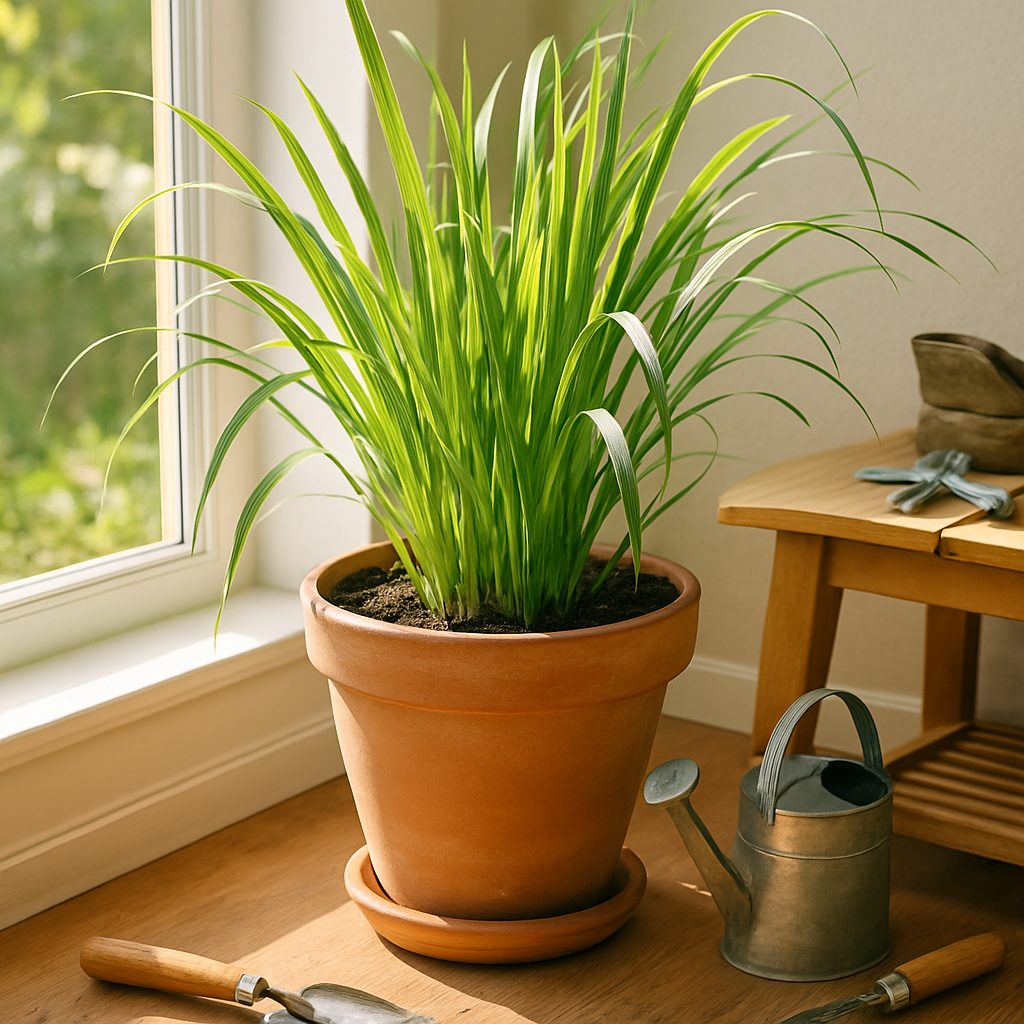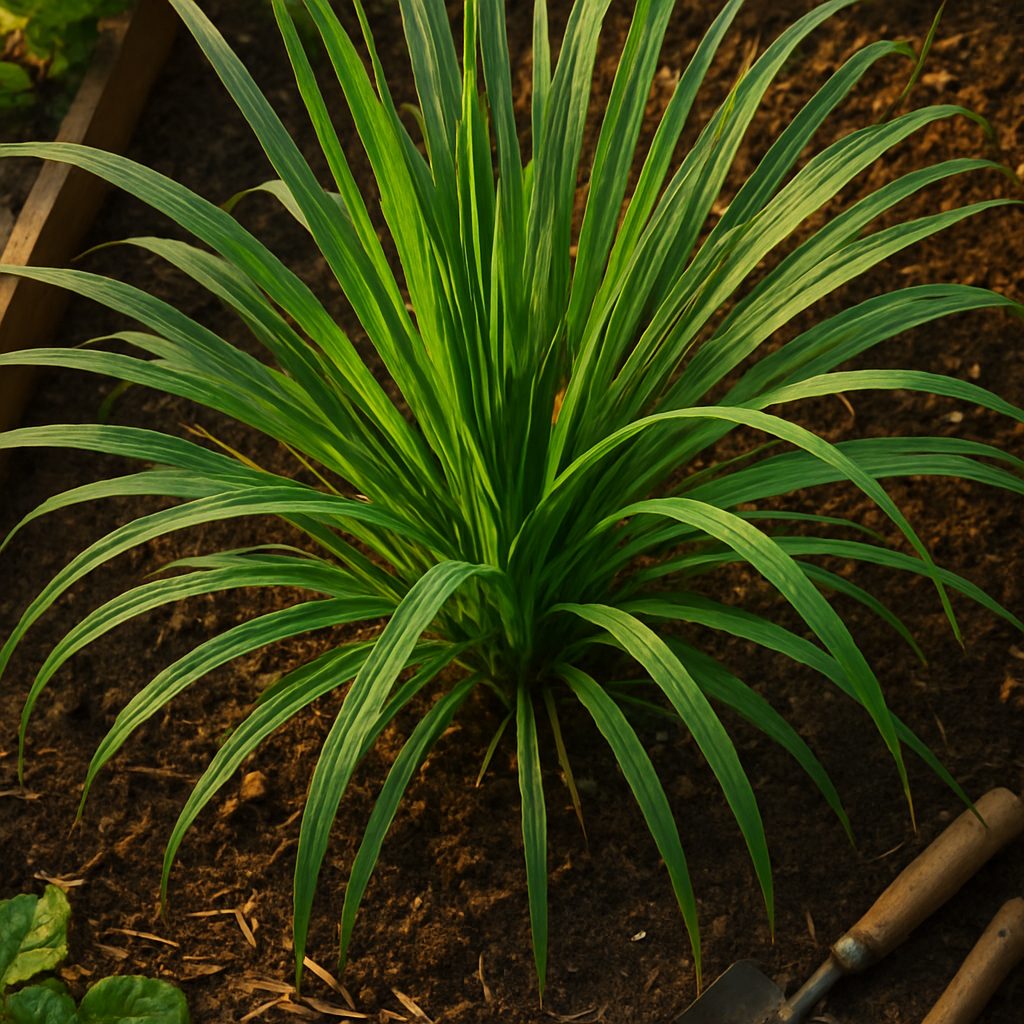Introduction to Growing Lemongrass
Lemongrass in hot climate gardening is more than just a fragrant addition to your backyard—it’s a culinary favorite that brings a citrusy brightness to teas, soups, and stir-fries, while also serving as an attractive ornamental plant. If you live in a tropical or hot region, you’re in luck: lemongrass thrives in consistently warm temperatures and plenty of sunlight, making it one of the easiest and most rewarding herbs to grow in such environments.
However, maximizing your lemongrass harvest isn’t as simple as popping a stalk in the soil and hoping for the best. Success with this plant relies on understanding the specific conditions it needs to flourish. In this post, you’ll discover the ideal sunlight exposure for robust lemongrass growth, how to manage soil moisture and drainage in hotter climates, and simple tips to ensure your plants stay lush and healthy—even during the fiercest summer heat.
Whether you’re a seasoned gardener or just starting out, you’ll find real-world advice and practical examples to help you enjoy fresh, homegrown lemongrass year-round.
Sunlight Preferences for Lemongrass

Lemongrass thrives best when it receives full sun for at least 6 to 8 hours a day, making sunlight a crucial factor in keeping this aromatic herb healthy and flavorful. When growing lemongrass outdoors, choose a spot in your garden or yard where the plant can soak up unobstructed sunlight throughout most of the day—avoid areas shadowed by trees, fences, or buildings.
Insufficient sunlight will stunt lemongrass growth, resulting in paler, thinner stalks with a weaker lemony aroma. So, skip those half-shaded patches if you want strong flavor in your dishes.
For apartment dwellers or anyone growing lemongrass indoors, place the plant near a south-facing window, as these get the brightest light. If you notice your plant leaning toward the window or developing spindly stems, it’s a clear sign it needs more light. Rotate the pot every few days to encourage upright, even growth, or supplement with a grow light if natural sunlight is limited—especially during shorter winter days.
Always remember: the more sunlight your lemongrass enjoys, the lusher the leaves and the richer the flavor. With a little attention to its light needs, you can enjoy healthy, fragrant harvests throughout the growing season.
Temperature Needs and Hardiness Zones
Lemongrass thrives best in warm climates, preferring temperatures consistently between 70°F and 85°F (21°C to 29°C). It loves plenty of sunlight and needs protection from chilly winds and sudden temperature drops.
When temperatures fall below 40°F (4°C), lemongrass can suffer cold damage: its leaves turn brown, growth slows, and the whole plant may die if left unprotected during frost. Because of its tropical origins, lemongrass is best suited to USDA hardiness zones 9 through 11, where winters are mild and freezes are rare.
Gardeners in cooler zones shouldn’t give up, though—lemongrass adapts well to container growing. If your area experiences frosty winters (zones 8 or below), plant lemongrass in pots that can be moved indoors before cold weather hits. Place containers by a sunny window or under grow lights to keep them healthy over winter. Just remember to water less during the colder months, as indoor conditions slow the plant’s growth.
Another tip: if space is tight, snip lemongrass back to about six inches before bringing it inside to promote bushier regrowth in spring. With a bit of planning and the right care, even gardeners outside the ideal climate can enjoy fresh lemongrass year-round.
Adapting to Indoor and Outdoor Conditions
Making the most of your space for growing lemongrass starts with optimizing sunlight, whether you’re indoors or outside. Indoors, place lemongrass near south- or west-facing windows where it can soak up at least six hours of sunlight a day. If these spots aren’t available or if winter brings gray days, supplement natural light with fluorescent grow lights or full-spectrum LED lamps, positioning them just a few inches above the plant tops.
Outdoors, observe your garden throughout the day to identify the sunniest areas and take advantage of natural microclimates. For example, planting lemongrass next to a south-facing wall will capture extra warmth, helping the plant thrive even in cooler regions. Raised beds or well-draining pots can prevent waterlogging in rainy climates, while mulching around the base conserves moisture during drier weather.
As seasons change, be ready to adapt: move pots easily between sunny spots, increase watering during hot spells, or shelter plants from cold snaps with row covers or by bringing them inside. Regularly check the soil; lemongrass likes it slightly damp but not soggy, so adjust your watering routine as temperatures and humidity shift.
By being observant and flexible, you can keep lemongrass healthy and productive no matter where you grow it.
Recognizing and Managing Environmental Stress

Recognizing signs of environmental stress in lemongrass is crucial for keeping your plants happy and thriving. Common symptoms of light stress include yellowed or scorched leaf tips when the plant is exposed to harsh, direct sun for too long, while legginess or slow growth can signal too little light.
Temperature extremes also take a toll—wilting, browning, or drooping leaves may occur if nighttime temperatures drop below 40°F (4°C), or if there’s a sudden heatwave above 95°F (35°C).
If you notice these symptoms, start by adjusting your lemongrass’s location:
- Move potted plants to an area with bright, indirect sunlight during the hottest part of the day.
- Provide shade outdoors using garden fabric.
For cold snaps, bring pots indoors or use a frost cloth to protect them overnight. Regularly monitor soil moisture, as stressed plants need consistent but not soggy watering; let the top inch dry out before you water again.
To help your lemongrass recover, trim damaged leaves to focus its energy on healthy growth, and consider a diluted liquid fertilizer to boost vigor.
Prevent future issues by gradually acclimating new plants to full sun over several days and checking local weather forecasts so you can take early action during extreme conditions. Always use containers with drainage holes and mulch outdoor lemongrass roots to buffer against rapid temperature shifts.
By watching for early warning signs and quickly adapting your care routine, you’ll keep your lemongrass lush and resilient all season long.
Regional Growing Tips and Suitability
Lemongrass thrives in warm, humid regions such as the southern United States, Southeast Asia, and parts of Australia, where temperatures rarely dip below 40°F (4°C). These areas are ideal because lemongrass loves full sun and well-draining soil, and their long, warm growing seasons encourage strong, bushy growth.
In cooler climates, like the northern US or parts of Europe, gardeners can still enjoy lemongrass by starting plants indoors in late winter and moving them outside after the last frost. Using containers is especially effective in these regions, allowing you to bring plants indoors when temperatures drop.
For both climate types, planting lemongrass in a sunny, sheltered spot with rich, moist soil will boost growth. Mulching helps conserve moisture and protect roots. Water regularly but avoid waterlogged soil, which can cause rot.
Taking advantage of local microclimates—such as placing lemongrass near south-facing walls or patios in cooler areas—can provide extra warmth and shelter. By tuning into your regional weather patterns and adjusting planting methods accordingly, you can ensure your lemongrass flourishes, whether you’re growing it outdoors year-round in subtropical zones or treating it as a summer annual in chillier locales.
Essential Lemongrass Care & Next Steps
Keeping your lemongrass thriving starts with giving it plenty of sunlight—at least six hours a day—and making sure it stays warm, ideally above 60°F (16°C). These tropical plants love the heat, so if you’re growing them indoors, place pots near a bright window or consider using grow lights during the cooler months.
Consistent care is key: water lemongrass regularly to keep the soil moist but not soggy, and trim back old stalks to encourage new growth. Feeding your plants every few weeks with a balanced, diluted fertilizer can also boost their vigor.
As you gain confidence, try propagating new plants from stalk cuttings or experiment with different container sizes to see what works best in your space. Don’t hesitate to check out gardening blogs, local nurseries, or online forums for more in-depth advice—there’s a vibrant community of herb gardeners happy to share tips and inspire your next lemongrass adventure.
